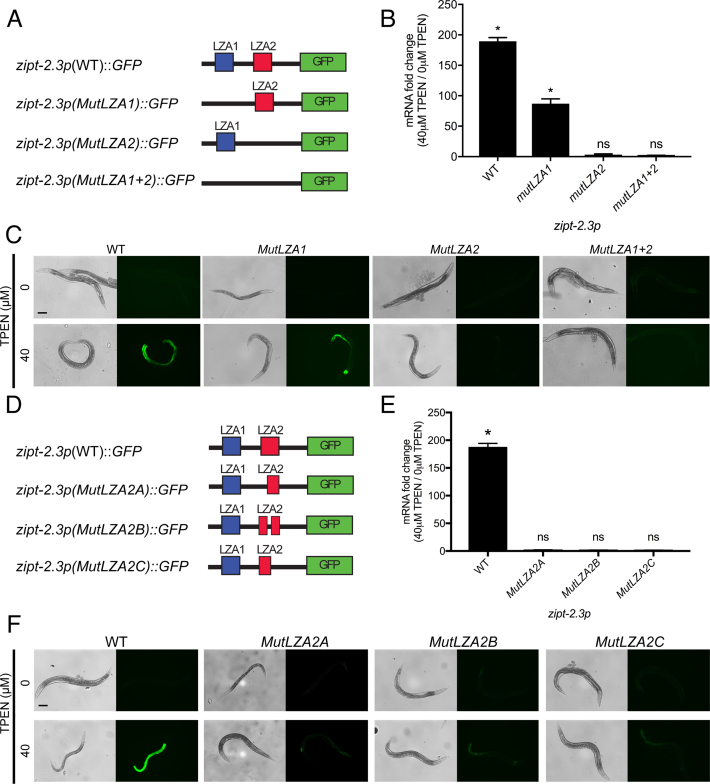Figure 2.
The LZA element was necessary for transcriptional activation of zipt-2.3 in response to zinc deficiency. (A and D) Diagrams (not to scale) of the zipt-2.3 promoter beginning at base pair −2199 and extending to the ATG translation start codon (black line). Boxes show LZA1 element (blue), LZA2 element (red) and the coding region of green fluorescent protein (green). Mutations created by randomizing the sequence of LZA1 or LZA2 elements are indicated by black lines. MutLZA2A, B and C affect base pairs 1–6, 7–14 and 15–19, respectively, of the 19 bp LZA weight matrix shown in Figure 1E. (B and E) A mixed stage population of transgenic animals containing multicopy arrays of the reporter constructs were cultured on medium with 40 μM TPEN to induce zinc deficiency or control, zinc replete medium (0 μM TPEN). GFP mRNA levels were analyzed by qRT-PCR. Bars depict the change in mRNA levels as the ratio between 40 and 0 μM TPEN, with positive values indicating transcriptional activation in zinc-deficient conditions. Values represent the average and error bars are the standard deviation of three independent biological replicates (*P < 0.01). (C and F) Images show transgenic animals at the young adult stage cultured with 0 or 40 μM TPEN; bright field images (left) show worm morphology, and fluorescent images (right) show GFP fluorescence. GFP signals were captured with identical settings and exposure times. Scale bar indicates 100 μm.

